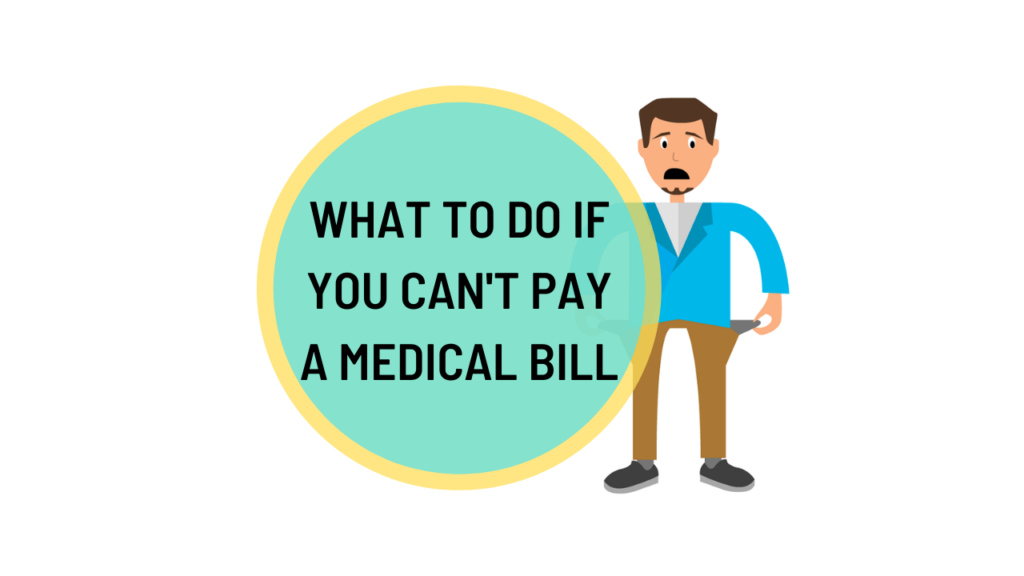
Let’s say you find yourself in a situation where you’re stuck with a hefty medical bill. Maybe you got into an accident and needed emergency attention; maybe you’re dealing with a serious condition that requires lots of hospital visits; or maybe your insurance didn’t actually cover your visits, and you didn’t find out until it was too late. Regardless, you can’t pay. So what can you do?
In this article, I’ll briefly go over how medical billing works so you have a better understanding of the process and can know what to expect. Then, I’ll talk about what happens if a bill is not paid. Finally, I’ll give you an alternative to not paying a large medical bill that will both make the bill go away and not leave you bankrupt. Whether or not you’re currently in this situation, this is good information to keep in your back pocket in the event that you – or a loved one – have to deal with this later.
Table of Contents
How Are Patients Billed for Doctor’s Visits?
You don’t need to know all the ins-and-outs of medical billing, but you should know the basics. In this section, we’ll discuss how billing works, depending on whether you’re insured or not.
If You Have Health Insurance
Some insurance plans have copays, while others come with deductibles. (In some cases, plans can include both.) Let’s start off with copays.
A copayment, or “copay” for short, is a fixed amount of money that you pay out-of-pocket for any medical-related visits. If your insurance plan involves copays, you’ll be asked to pay your copay amount before your visit begins. Typically, copays range from as low as $15 for routine visits to $300 for emergency visits, assuming that the physician or medical facility is in-network.
What are in-network providers?
In-network providers are healthcare professionals (e.g. doctors, nurses, physical therapists) and healthcare systems (e.g. specific hospitals, private practices, and labs) that have a contract with your insurance to offer healthcare at a discounted rate.
To find out whether or not a provider is in-network, you can search for a provider on your insurance company’s website or directly call your insurance.
On the other hand, your insurance plan may come with a deductible, which is a specific, out-of-pocket amount that you’ll need to contribute for eligible medical expenses, before your insurance will start covering costs. There’s a wide range of deductible amounts, but they’re typically a few thousand dollars. Let’s say your deductible is $2,000. This means that you’ll cover all of your own medical expenses until you hit the $2,000 mark. Afterwards, your insurance will start covering some or all of the costs, depending on your plan.
In either case, you’ll give the office your insurance information, and they will submit a claim (request for payment) for services to your insurance so that your insurance has record and can pay for any remaining costs. If you were seen by an in-network provider, your insurance should cover the remainder. If you were seen by an out-of-network provider, your insurance won’t contribute, and you’ll have to pay for the rest out-of-pocket.
If You Don’t Have Health Insurance
If you don’t have health insurance, you will need to pay out-of-pocket and cover the entirety of the cost of the visit yourself.
What Happens If You Don’t Pay a Medical Bill?
Your provider will contact you in the event that you have an unpaid medical bill. If you don’t pay the bill within a specific timeframe (typically, a few weeks), then they’ll send the bill to collections. Once the bill is sent to collections, a collection agency will try to retrieve the payment. Any collections may negatively affect your credit score.
What Can I Do If I Can’t Afford to Pay a Large Medical Bill?
There are lots of reasons why you might find yourself not being able to pay a medical bill. In fact, this is a lot more common than you may think. I actually found myself blindsided by this situation recently, which prompted me to find all of this information. Now, I’m sharing with you so don’t panic!
The main thing you should keep in mind is that hospitals and medical offices are–at the core–businesses. Simply put, their main goal is to make money. This means that they’d rather receive a small percentage of the money owed than never get anything back. Using this information to your advantage, here’s what you’ll want to do if you find yourself being unable to pay a medical bill:
Option #1
Many healthcare places have financial assistance plans that allow you to pay only a fraction to none of the payment owed, depending on your income. Clearly, this isn’t common knowledge. After all, why would medical centers want people to know that there’s a way for them to pay less for their visits? Nevertheless, take advantage of this option.
If you want a real example, click here to see one from UC San Diego Health. In the “Financial Assistance Application” form, you’ll see that patients who make below certain thresholds can have medical bills adjusted so that bills can be reduced anywhere from 50% to 100%. Depending on where you received your medical care, check online to see if there’s a similar payment option available.
Option #2
Let’s say the place you were seen at has no such plan available. This is when you’ll have to call their billing department. Here’s what you’ll want to say:
- Explain your situation. Say that you cannot afford the bill, but you want to pay something.
- The person who answers the phone may insist on a payment plan where you make contributions each month. Tell them that this is not possible, given your financial situation.
- If they persist, ask to speak to the billing manager and let them know that you are willing to wait.
- Be pleasant and re-explain your situation. Say that you’re willing to pay 25% of the total amount owed if they can just make the bill go away.
- Once the manager agrees, make sure to get the agreement in writing before making any payment.
Congrats! You just got your medical bill significantly reduced! 😀
Conclusion
The most important thing is to approach this situation pleasantly but assertively. Remember, there’s no need to feel ashamed! Patients being unable to pay their medical bills is nothing new. Moreover, healthcare in the U.S. is extremely expensive, and you need to do what’s best for your situation.
I hope this helped you out! I know that finding an article like this on the internet when I was going through this situation would’ve saved me weeks of panicking. Good luck! 🙂
